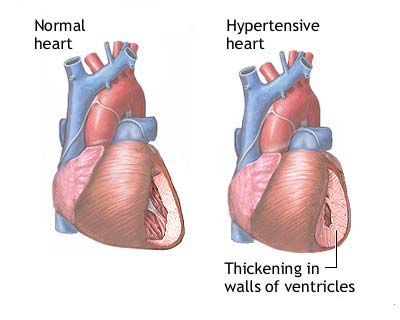Hypertension, or high blood pressure, is a common disorder that affects 1 out of 4 Americans. It is the most common cardiovascular disease in the world. High blood pressure means the force of the blood against the artery walls is high enough to threaten the arteries which could result to fatal ailments like stroke and heart disease. It is called the silent killer because the symptoms are hard for a patient to notice. In fact, you may have no idea that you have hypertension unless you undergo a routine checkup.
Symptoms
 Most individuals with hypertension have no signs or symptoms even if their blood pressure levels have increased to fatal levels. Although some people with high blood pressure experience headaches and nosebleeds, these signs and symptoms often don’t occur until hypertension has reached its life-threatening stage. As such, blood pressure should be taken regularly during an appointment with the doctor.
Most individuals with hypertension have no signs or symptoms even if their blood pressure levels have increased to fatal levels. Although some people with high blood pressure experience headaches and nosebleeds, these signs and symptoms often don’t occur until hypertension has reached its life-threatening stage. As such, blood pressure should be taken regularly during an appointment with the doctor.
It is recommended that blood pressure reading be conducted at least every other year starting at age 18. A doctor is likely to recommend more frequent blood pressure readings if the patient has been diagnosed with hypertension or other cardiovascular disease risk factors. It is common for blood pressure to be taken among children aged three years and older as part of their yearly check-ups.
Risk Factors
There are many risk factors associated with hypertension which partly explains why many people are afflicted with this condition. For one, elderly people are more prone to high blood pressure. Women who are in the menopausal stage are also prone to developing hypertension. High blood pressure also has a tendency to run in families, as well as race as blacks are more prone to it than whites.
Overweight people are also at risk to this condition because the more weight that a person has, the more blood he or she needs to supply oxygen to the tissues. The pressure on the artery walls increases with the volume of blood circulated through the blood vessels. Other risk factors of hypertension are high salt intake, frequent use of tobacco, minimal potassium and vitamin D in the diet and drinking too much alcohol. Stress can also contribute to high blood pressure.
Treatment
Diovan is one of the numerous drugs that doctors prescribe for treatment of high blood pressure in adults and children who are at least six years of age. It is an angiotensin II receptor antagonist the prevents the narrowing of the blood vessels which results to lower blood pressure and improved flow of blood.
The usual dose of Diovan for treatment of hypertension is 80 mg table taken once a day. If after four weeks the blood pressure remains high, a physician may recommend increasing it to 160 mg once a day, or even to 320 mg. Some of the more common side effects of Diovan for hypertension treatment are headache, dizziness, sleepiness, diarrhea, nausea, dry cough, blistering skin, runny nose, pain in the joints or back, muscle pain, anxiety and sexual function problems.
Share This